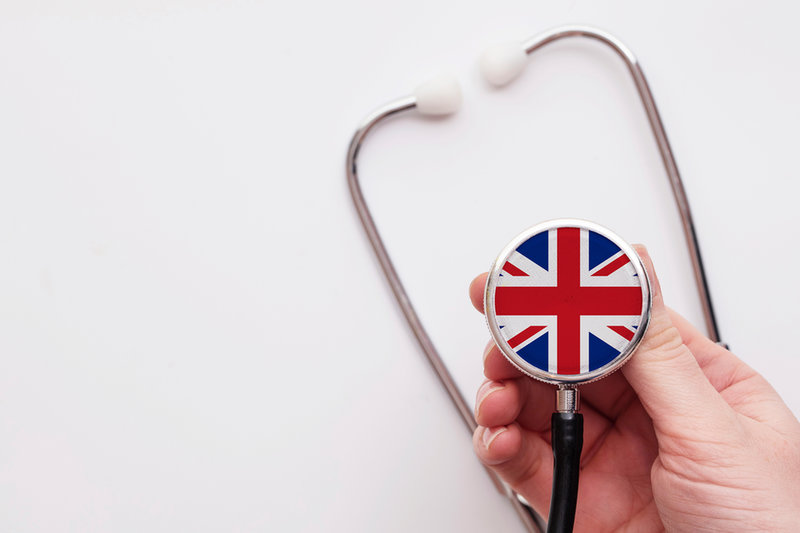Comment
VPAS is dead, long live VPAG
The new scheme for 2024–28, renamed the Voluntary Scheme for Branded Medicines Pricing, Access and Growth (VPAG), with details here, will be implemented in January, writes GlobalData analyst Janet Beal.

Credit: Shutterstock/ Ink Drop
After months of intense negotiations, the UK Department of Social Care (DHSC) and the Association of the British Pharmaceutical Industry (ABPI) emerged with a plan on 21 November for the replacement of the much-maligned 2019 Voluntary Scheme for Branded Medicines Pricing and Access (VPAS), a five-year clawback scheme for cost-containment of branded National Health Service (NHS) prescription medicines, which is due to expire on 31 December 2023. The VPAS had lately been deeply unpopular, imposing a highly punitive payback rate of 26.5%. The new scheme for 2024–2028, renamed the Voluntary Scheme for Branded Medicines Pricing, Access and Growth (VPAG), with details here, will be implemented in January.
Despite initial pessimism that a favourable deal could be reached at all, the new VPAG scheme has mostly been hailed with a collective sigh of relief from the pharma industry. The DHSC has estimated that savings to the NHS over the next five years could reach £14bn ($17.6bn)—and an extra £400m ($502m) is expected to be invested in life sciences R&D under novel elements of the scheme.
Rocketing payback towards the end of the 2019–2023 VPAS
The 2019–2023 VPAS began well, but flaws emerged in its last two years. Like predecessor UK schemes, it had a clawback-based structure, intended to manage NHS spending on medicines by triggering payback at annually published rates from VPAS member companies whenever sales growth of branded NHS prescription medicines (innovative drugs, branded generics, and biosimilars) exceeded a specific threshold, set at a very low fixed rate of 2%.
Sales growth was initially stable in 2019–2021, with acceptable single-digit payback rates—but an unforeseen post-Covid-19 spike in drug sales in 2021–2022 triggered a catastrophic jump in payback rates to an unprecedented 26.5% in 2023. This sent shock waves through the pharma sector, triggering accusations of “unsustainability,” high-profile exits of AbbVie and Eli Lilly from VPAS, threatened product withdrawals, and warnings of severe long-term consequences to the UK economy. In ensuing negotiations over the 2024 scheme, there was considerable pessimism over any change of position from the government. However, the unthinkable appears to have been achieved—terms that appear to be acceptable on both sides.
No low fixed payback rate—but could differential rates and threshold adjustments provide a solution?
In March 2023, the ABPI set out a series of innovative proposals as a “wishlist” for the new VPAS replacement. Notably, some of the ABPI’s proposals, including its VPAG name and the inclusion of innovative elements to support investment in R&D and patient access, have been mirrored in the final version, which is encouraging—although disappointingly, the ABPI’s suggestion of a fixed and predictable single-digit payback rate (proposed at 6.88%) has not been incorporated in the final scheme, meaning that variable annual payback rates will still apply. However, other measures have been incorporated to help keep these rates in check.

Credit: Ink Drop / Shutterstock.com
Firstly, instead of a single payback rate set each year, the scheme will have two differential rates, for “newer” and “older” medicines, under a framework described by the DHSC as its new “affordability mechanism.” And crucially, the government plans to make phased adjustments to the allowed sales growth baseline (previously fixed at the low level of 2%)—starting from 2% in 2024, but rising to 3.75% in 2025–2026, and 4% in 2027–2028. This is likely to help contain further unusual sales fluctuations, potentially avoiding major distortions in payback of the kind encountered in 2023.
There will initially be a three-month “transitional period” in 2024, with a fixed payback rate of 19.5% applied to all categories of eligible sales. However, from April 1 onwards, differentiated payment rates between newer and older medicines will be applied. For older drugs, including branded generics and off-patent originals, payback will mainly be 10%—but those whose prices have not been reduced by at least 35% will be liable for a “top-up rate” of 1%–25% on a sliding scale, and DHSC income from this mechanism will be used to subsidise payback rates for more innovative medicines. Promisingly, for newer medicines, current forecasts have set the 1 April-onwards 2024 payback rate at a relatively affordable 15.1%.
New innovation programmes and support for R&D
In addition to these new mechanisms, several ABPI-proposed innovative elements have been introduced, including the payment of premiums at specified rates to a new joint government-industry Life Sciences Investment Program. This will be directed towards support for UK clinical trials, health technology assessments (HTAs), and manufacturing. There will also be support from VPAG for areas such as horizon scanning, early regulatory dialogue, and the addressing of healthcare inequalities.
Good for innovation—but what about generics and biosimilars?
While this long-awaited event has been greeted with considerable relief so far by the innovative pharma sector, it is less favourable for generics and biosimilars. The British Generic Manufacturers Association (BGMA) has voiced initial concerns over the details of the differential payback mechanisms and their effects on free competition and the potential for abuse in the categorisation mechanism for “older” drugs. However, it is certainly remarkable—when considering last year’s outcry over the 26.5% rate—that a compromise with the UK Government was even possible, let alone an innovative package that appears to be mutually beneficial.